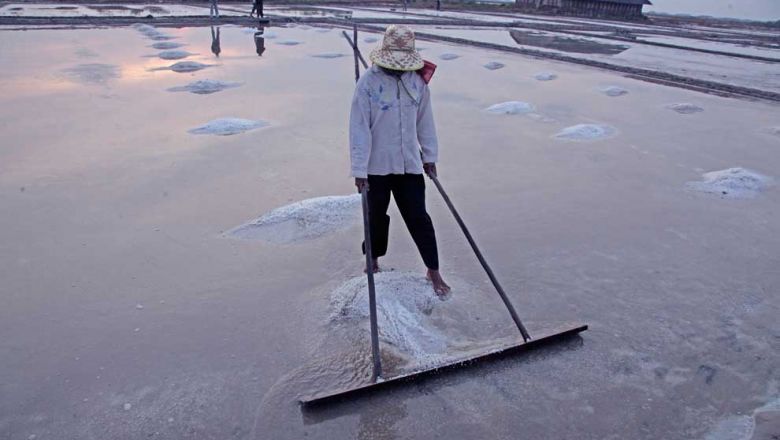GI tags key to Kampot pepper exports
GI tags key to Kampot pepper exports
The Ministry of Commerce and the Kampot Pepper Promotion Association (KPPA) have devised a plan to further boost Kampot pepper exports this year, now armed with its coveted geographical indication (GI) status in more countries.
KPPA president Nguon Lay made the remark at a January 19 meeting with the ministry’s Department of Intellectual Property Rights.
He said: “In pushing to create a market for more medium- and large-scale farmers, how should we go about selecting those who will supply companies with their produce when most target only small farmers?”
Stakeholders are bending over backwards to better harness the strategic potential of the commodity’s GI brand, he said. “How does one distribute all the Kampot pepper to the world market?”
He said five companies have entered contract farming with 280 small-scale Kampot pepper farmers for the 2021 harvest season.
The Czech-owned EU Land and Pepper Investment Co Ltd has entered into the most contract farming agreements – with at least 180 Kampot-pepper farm households – to supply 10 tonnes of peppercorns for this year, he said.
Farm Link Ltd meanwhile has penned contracts with 70 small-scale farmers for the upcoming harvest, he added.
“They pledge to buy up all the Kampot pepper that farmers produce. Last year, Farm Link bought 21 tonnes of Kampot pepper from farmers, promising to further increase that amount this year,” Lay said.
Pov Pheng, who owns more than 300 wooden Kampot-pepper-vine stakes, which are anchored into the ground for the pepper plants to grow around, said farmers are preparing for the harvest, which is widely expected be more than last year.
He said the farmers are riding a wave of confidence created by past contract farming agreements. “We’re likely to see a more stable market this year that’s more robust too.”
Cambodia exported more than 70 tonnes of Kampot pepper to the international market last year, according to Lay.
He said prices now stand at $15 per kg for black pepper, $25 per kg for red pepper and $28 per kg for white pepper. According to him, the prices have not changed in five years.
He said the crop has gained GI protection from more than 50 countries.
The latest KPPA data, released in April, show membership has increased to 455 households this year from 118 in 2010. But Lay told The Post on November 4 that 68 out of the association’s then-447 households had abandoned the crop.
The April statistics show that land designated for Kampot pepper cultivation has increased from 10ha in 2010 to 290ha today – exclusively in Kampot and Kep – which can yield 82.78 tonnes of the commodity per annum, according to KPPA.
Cambodia exported 8.55 million tonnes of its six most profitable agro-industrial crops, through formal and informal channels, worth more than $2.32 billion last year as of December 15, according to Minister of Agriculture, Forestry and Fisheries Veng Sakhon.
In a December 24 post on his official Facebook page, the minister listed the crops as cassava, cashew nuts, mangoes, yellow bananas, peppercorn and Pailin longan.
During the period, the Kingdom shipped out 5,005.65 tonnes of GI and non-GI peppercorn worth $25,490,200.
















